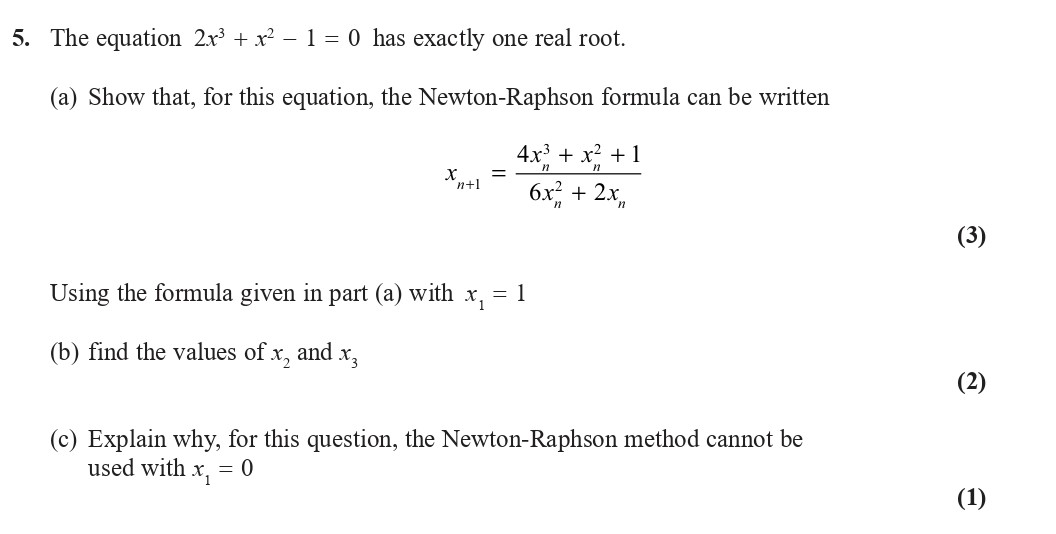Photo AI
The equation $2x^2 + x^3 - 1 = 0$ has exactly one real root - Edexcel - A-Level Maths Pure - Question 7 - 2018 - Paper 2
Question 7

The equation $2x^2 + x^3 - 1 = 0$ has exactly one real root. (a) Show that, for this equation, the Newton-Raphson formula can be written $$x_{n+1} = \frac{4x_n^3 + ... show full transcript
Worked Solution & Example Answer:The equation $2x^2 + x^3 - 1 = 0$ has exactly one real root - Edexcel - A-Level Maths Pure - Question 7 - 2018 - Paper 2
Step 1
Show that, for this equation, the Newton-Raphson formula can be written
Answer
To derive the Newton-Raphson formula for the function given, we first identify:
Let:
We need to compute the derivative:
Using the Newton-Raphson iterative formula: Substituting and into this formula yields:
This can be rewritten as:
thus proving the required formula.
Step 2
Step 3
Explain why, for this question, the Newton-Raphson method cannot be used with $x_1 = 0$.
Answer
The Newton-Raphson method cannot be used with for the following reasons:
-
Substituting into the Newton-Raphson formula results in: This makes the denominator of the Newton-Raphson formula zero, which leads to an undefined expression.
-
Additionally, near the point , the function has a tangent that does not intersect the x-axis due to the characteristics of the curve of , indicating that convergence cannot be achieved using this method starting with .
